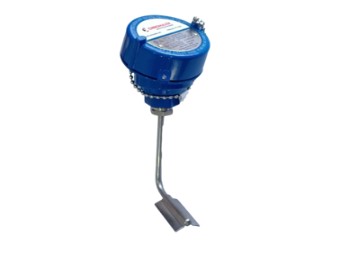RTD PT100 – Principles, Applications, and Temperature Calculation
An RTD (Resistance Temperature Detector) is a temperature sensor that operates based on the principle that a metal’s electrical resistance changes with temperature. The most widely used material in RTDs is Platinum (Pt) due to its high stability and accuracy. PT100 refers to an RTD sensor that has a resistance of 100 ohms at 0°C. It follows a linear resistance-to-temperature relationship and conforms to standards such as IEC 60751 or the American Curve (Alpha = 0.00392).

How RTD PT100 Works
As the temperature increases, the atoms in platinum vibrate more, increasing electrical resistance. This resistance is measured by sending a small current through the RTD and detecting the voltage drop, which is then calculated into temperature using a formula or resistance-temperature table.
RTD Temperature vs. Resistance Table
| Temperature (°C) | Resistance (Ω) |
| 0 | 100.00 |
| 100 | 138.51 |
| 200 | 175.86 |
| 300 | 212.05 |
| 400 | 246.81 |
How to Calculate Temperature from Resistance
For temperatures between 0–850°C, the simplified Callendar–Van Dusen equation can be used:
T = (R – R0) / (α × R0)
Where:
- T = temperature in °C
- R = measured resistance (Ω)
- R0 = resistance at 0°C (typically 100 Ω)
- α = temperature coefficient (0.00385 or 0.00392)
Example: If RTD reads 119.40 Ω, using α = 0.00385:
T = (119.40 – 100) / (0.00385 × 100) = 50.39°C
Types of RTD Wiring
- 2-Wire: Simplest, but affected by lead wire resistance
- 3-Wire: Most common in industry, provides partial compensation
- 4-Wire: Most accurate, used in precision measurements
Applications of RTD PT100
- Chemical & Petrochemical Plants
- Food & Pharmaceutical Manufacturing
- Power Plants & Energy Systems
- HVAC and Cold Room Monitoring
- R&D Laboratories
- SCADA, PLC, and DCS Systems
Advantages of RTD PT100
- High accuracy and stability
- Excellent repeatability over time
- Longer lifespan compared to thermocouples
- Standardized and easy to calibrate
Best Practices and Cautions
- Use high-accuracy circuits to measure resistance
- Use shielded, low-resistance cables
- Choose sensor type (thin-film, wire-wound, etc.) based on the environment
- Confirm standard (Alpha 0.00385 or 0.00392) before calibration
Conclusion
RTD PT100 is a professional-grade temperature sensor known for its precision and stability, making it ideal for automation, control, and laboratory environments. Understanding the relationship between resistance and temperature allows for accurate interpretation, calibration, and integration with digital systems like PLCs, SCADA, or industrial controllers.
